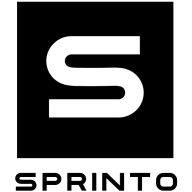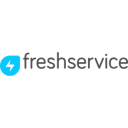Sprinto vs Drata: Which compliance solution is right for your business?
- 01Sprinto vs Drata: overview
- 02What's the difference between Sprinto and Drata?
- 03Sprinto pros and cons
- 04Drata pros and cons
- 05Sprinto compared to Drata
- 06Drata compared to Sprinto
- 07Features comparison
- 08Sprinto vs Drata: Which is the best for your business?
- 09Promotions on Security software
- 10Alternatives to Sprinto & Drata
Access up to $2,500 savings on Sprinto & $11,400 on Drata
Sprinto
25% off for 1 year
Drata
30% off for 1 year
Access up to $2,500 savings on Sprinto & $11,400 on Drata
Sprinto
25% off for 1 year
Drata
30% off for 1 year
Selecting the right compliance automation platform is crucial for ensuring your organization meets industry standards while minimizing the manual effort required to maintain compliance. These tools streamline the process of achieving and maintaining certifications, provide real-time monitoring, and automate evidence collection, all of which are essential for efficient and effective compliance management. Additionally, they offer robust reporting capabilities, enhancing visibility into your compliance status and making audits less daunting.
With several options available for your compliance needs, how do you choose the best one for your business? In this article, we guide you through a detailed comparison of two leading compliance automation platforms, Sprinto vs. Drata. By examining their key features and core differences, you'll be better equipped to make an informed decision that aligns with your organization's compliance goals.
Sprinto vs Drata: overview
Sprinto and Drata are two leading contenders in the legal processes and compliance automation space, each offering distinct advantages tailored to meet the specific needs of organizations seeking to streamline their compliance processes.
Sprinto is renowned for its deep focus on automation and integration, particularly among fast-growing startups and mid-sized companies aiming to achieve and maintain compliance with minimal manual intervention. On the other hand, Drata offers a robust compliance platform designed to simplify the path to compliance, with an emphasis on security and ease of use. Drata not only automates key aspects of compliance but also provides extensive integrations and reporting tools, making it suitable for organizations that need a user-friendly solution with strong security features.
To make an informed decision between Sprinto and Drata, it's essential to consider your organization's specific compliance requirements, growth stage, and the level of automation desired. Sprinto may be the ideal choice for companies looking for a highly automated and integration-rich compliance solution, while Drata offers a balanced approach with a focus on security and user experience, making it suitable for organizations seeking an easy-to-use platform with comprehensive compliance capabilities.
What's the difference between Sprinto and Drata?
Sprinto and Drata are leading compliance automation platforms, each offering unique strengths that cater to different organizational needs. Understanding the differences between these two tools is crucial in choosing the one that best aligns with your compliance objectives and business model.
Sprinto is designed with a focus on automation and scalability, making it an ideal solution for fast-growing startups and mid-sized companies aiming to streamline their compliance processes. Sprinto excels in automating the entire compliance lifecycle, from continuous monitoring to automated evidence collection and reporting. It integrates seamlessly with popular tech stacks, allowing organizations to maintain compliance with minimal manual effort. Sprinto is particularly strong in supporting companies through rapid growth phases, where managing compliance manually could become cumbersome and error-prone. Its deep automation capabilities make it a preferred choice for teams looking to reduce the time and resources spent on compliance management.
In contrast, Drata emphasizes security, ease of use, and a user-friendly experience, making it a great fit for organizations that prioritize simplicity and robust security features. Drata not only automates key compliance tasks but also offers extensive integrations with existing systems, which helps in maintaining a secure and compliant environment. Drata’s platform is designed to be intuitive, reducing the learning curve for new users and ensuring that teams can quickly adopt and benefit from its features. It is especially well-suited for companies that need a comprehensive, yet straightforward, compliance solution that doesn’t compromise on security or user experience.
Both platforms offer different views and functionalities to meet diverse compliance needs. Sprinto’s automation-centric approach makes it ideal for companies seeking to scale rapidly without increasing compliance overhead, while Drata’s balance of ease of use and security makes it a solid choice for organizations looking for a reliable, user-friendly compliance tool. Understanding these distinctions will help you select the platform that best suits your organization's compliance requirements.
Sprinto pros and cons
What are the advantages of Sprinto?
- Comprehensive automation: Sprinto excels in automating the entire compliance lifecycle, from continuous monitoring to evidence collection, reducing the manual effort required and minimizing human error.
- Seamless integrations: The platform integrates well with popular tech stacks, making it easier to incorporate into existing workflows without significant disruption.
- Scalability: Sprinto is designed to support fast-growing companies, making it an ideal choice for startups and mid-sized businesses that need to scale their compliance efforts efficiently.
- User-friendly interface: Despite its powerful features, Sprinto maintains a user-friendly interface that allows teams to navigate and use the platform effectively with minimal training.
- Robust reporting capabilities: The platform offers strong reporting tools that provide real-time visibility into compliance status, helping organizations stay ahead of audits and compliance deadlines.
What are the disadvantages of Sprinto?
- Learning curve for advanced features: While Sprinto is generally user-friendly, some of its more advanced features may require a learning curve, particularly for teams unfamiliar with compliance automation.
- Cost for smaller teams: The platform’s comprehensive features and scalability might come with a higher cost, which could be a consideration for smaller teams or businesses with limited budgets.
- Customization limitations: Although Sprinto integrates well with other tools, there may be some limitations in terms of deep customization options compared to other platforms.
- Industry-specific use cases: Sprinto is well-suited for certain industries but may not cater to highly specialized or niche compliance requirements as effectively as more tailored solutions.
- Initial setup time: The initial setup and configuration of Sprinto, especially for companies with complex compliance needs, might take longer compared to simpler compliance tools.
Drata pros and cons
What are the advantages of Drata?
- Ease of use: Drata is known for its intuitive, user-friendly interface, which allows teams to quickly adopt the platform without extensive training. This ease of use is particularly beneficial for smaller teams or organizations new to compliance automation.
- Strong security features: Drata places a significant emphasis on security, offering robust features to help organizations maintain a secure environment while achieving compliance. This focus on security is crucial for companies handling sensitive data.
- Comprehensive integration options: Drata integrates seamlessly with a wide range of existing systems and tools, enabling organizations to maintain compliance across their entire tech stack without major disruptions.
- Real-time compliance monitoring: The platform provides continuous, real-time monitoring of your compliance status, helping organizations stay ahead of potential issues and maintain a proactive compliance posture.
- Audit readiness: Drata offers excellent audit preparation tools, making it easier for organizations to gather and present evidence during audits. This feature reduces the time and stress typically associated with audit processes.
What are the disadvantages of Drata?
- Higher cost for advanced features: While Drata offers a lot of value, the cost can be higher, especially for organizations that need access to its more advanced features. This may be a consideration for smaller companies or startups.
- Limited customization: Drata’s focus on ease of use means it may offer fewer customization options compared to more complex platforms. This could be a limitation for organizations with very specific compliance requirements.
- Initial setup complexity: Although Drata is user-friendly once set up, the initial configuration can be complex, particularly for organizations with unique or highly specialized compliance needs.
- Narrower industry focus: Drata is highly effective for common compliance standards like SOC 2, but it may not cater as well to industries with niche or less common compliance requirements.
- Dependence on integrations: Drata’s effectiveness relies heavily on its integrations with other tools and systems. If your organization uses less common or custom-built tools, the integration process might be more challenging.
Compare Drata to other tools
Sprinto compared to Drata
Sprinto and Drata are both powerful compliance automation platforms, but they cater to different needs. Sprinto excels in deep automation and scalability, making it ideal for rapidly growing companies that require comprehensive compliance management with minimal manual effort. It integrates seamlessly with popular tech stacks, ensuring efficient operations.
Drata, on the other hand, is recognized for its ease of use and strong security features, making it a great fit for organizations that prioritize user-friendliness and robust protection. While Sprinto focuses on automating complex compliance processes, Drata offers a more intuitive, security-centric approach.
Is Sprinto better than Drata?
Whether Sprinto is better than Drata depends on your organization’s specific needs and priorities. Sprinto is ideal for businesses that require advanced automation and scalability, making it particularly well-suited for rapidly growing companies that need to manage complex compliance processes efficiently.
However, if your organization prioritizes ease of use and robust security features, Drata may be the better choice. Drata’s user-friendly interface and strong focus on security make it a compelling option for companies that want a straightforward, secure compliance solution.
What is Sprinto best used for?
Sprinto is best used for automating and scaling compliance management in fast-growing companies, particularly those navigating complex regulatory environments. It excels in reducing the manual burden associated with achieving and maintaining certifications such as SOC 2, ISO 27001, and GDPR.
By providing continuous monitoring, automated evidence collection, and seamless integrations with existing tech stacks, Sprinto ensures that compliance processes are efficient, accurate, and aligned with organizational growth. Its robust automation capabilities make it particularly valuable for startups and mid-sized businesses that need to stay compliant without dedicating extensive resources to manual compliance management.
Can Sprinto replace Drata?
Whether Sprinto can replace Drata depends on your organization’s specific needs. Sprinto and Drata both offer robust compliance automation, but they excel in different areas. Sprinto is designed for deep automation and scalability, making it ideal for fast-growing companies looking to minimize manual compliance efforts.
Drata, however, focuses on ease of use and strong security features, providing a more user-friendly experience. If your priority is comprehensive automation and integration with existing tech stacks, Sprinto might replace Drata effectively. However, if your organization values simplicity and robust security features, Drata may still be the better fit.
Is Sprinto cheaper than Drata?
The cost comparison between Sprinto and Drata varies depending on the specific needs and scale of your organization. Generally, Sprinto and Drata are priced competitively, but the total cost can differ based on the features and level of automation required.
Sprinto may appear more cost-effective for companies that need extensive automation and integration capabilities, as it can reduce manual compliance efforts and associated costs. However, Drata’s pricing for startups might be more attractive for organizations prioritizing ease of use and security features.
Is there a better Security software than Sprinto?
While Sprinto offers a comprehensive compliance automation solution with deep automation and scalability, it's important to consider alternative software options to ensure you find the best fit for your organization's specific compliance needs.
Notable alternatives to Sprinto in the compliance automation space include Drata, Vanta, Secureframe, and Hyperproof.
The ideal compliance software for your organization will depend on your unique requirements, such as the complexity of your compliance obligations, the need for specific integrations, and your team’s familiarity with compliance processes. If you prioritize extensive automation and integration capabilities, Sprinto may be an excellent choice.
25% off for 1 year on Sprinto
Get 25% off for 1 year on Sprinto and up to $2,500 savings with Secret.
Drata compared to Sprinto
Drata and Sprinto are both leading compliance automation platforms, but they cater to slightly different needs. Drata is known for its user-friendly interface and strong focus on security, making it an excellent choice for organizations that prioritize ease of use and robust protection of sensitive data. It offers seamless integrations and a straightforward approach to compliance management.
In contrast, Sprinto emphasizes deep automation and scalability, making it particularly suitable for fast-growing companies that need to manage complex compliance requirements with minimal manual effort.
Is Drata better than Sprinto?
Determining if Drata is better than Sprinto depends on your organization’s specific requirements. Drata excels in providing a user-friendly, secure platform that integrates seamlessly with other tools, making it ideal for organizations that prioritize ease of use and the protection of sensitive data. It simplifies compliance management, offering a straightforward approach that can be easily adopted by teams.
However, if your company is rapidly growing and requires extensive automation to manage complex compliance tasks efficiently, Sprinto may be the more suitable option.
What is Drata best used for?
Drata is best used for simplifying and automating the compliance management process, particularly for organizations that prioritize security and ease of use. It is designed to help businesses achieve and maintain compliance with standards like SOC 2, ISO 27001, and GDPR by providing continuous monitoring, automated evidence collection, and real-time compliance tracking.
Drata's intuitive interface and extensive integrations make it an ideal solution for companies looking to streamline their compliance efforts without compromising on security. It's particularly effective for organizations that want a user-friendly platform that simplifies the complexities of compliance while ensuring data protection and audit readiness.
Can Drata replace Sprinto?
Whether Drata can replace Sprinto depends on your organization's specific needs and priorities. Drata is well-suited for organizations seeking a user-friendly, security-focused compliance platform with robust integrations and real-time monitoring capabilities. However, Sprinto is designed with deep automation and scalability in mind, making it ideal for fast-growing companies that require extensive compliance management with minimal manual intervention.
If your focus is on ease of use and straightforward compliance processes, Drata might serve as a suitable replacement. However, if your organization values advanced automation and the ability to scale compliance efforts efficiently, Sprinto may still be the better choice.
Is Drata cheaper than Sprinto?
The cost comparison between Drata and Sprinto depends on the specific needs and scale of your organization. Generally, Drata and Sprinto are competitively priced, but their cost structures can vary based on the features and level of automation required. Drata might be more cost-effective for organizations prioritizing ease of use and security, particularly if they don't need the extensive automation that Sprinto offers.
On the other hand, Sprinto's advanced automation capabilities might justify a higher investment for companies looking to reduce manual compliance efforts significantly. This cost can be easily calculated through Sprinto’s Compliance Cost Calculator.
Is there a better Security software than Drata?
While Drata is a powerful and user-friendly platform for compliance automation, it's important to explore alternative software options to ensure you find the best fit for your specific compliance needs.
Several noteworthy alternatives to Drata in the compliance management space include Sprinto, OneTrust, Thoropass, and Scytale.
Choosing the ideal compliance software depends on your organization’s unique requirements, including the complexity of your compliance obligations, desired level of automation, and integration needs. If you prioritize ease of use and robust security, Drata may be an excellent choice.
30% off for 1 year on Drata
Get 30% off for 1 year on Drata and up to $11,400 savings with Secret.
Features comparison
Sprinto Takes the Lead Over Drata for User-Friendliness
Sprinto excels in ease-of-use, offering a user interface that is both simple and intuitive, making it an ideal choice for users who prioritize a straightforward, hassle-free software experience. The platform’s design focuses on clarity, allowing users to quickly navigate through compliance tasks, access essential features, and achieve their goals without unnecessary complexity. Sprinto also provides detailed guides and responsive customer support, ensuring users can easily resolve any issues or questions.
In contrast, Drata, while offering advanced functionality and robust features, can be more challenging to navigate, particularly for those who are not tech-savvy or are new to compliance automation. This makes Sprinto a more accessible option for users who prefer a more streamlined and user-friendly experience.
Sprinto Excels Ahead of Drata in Streamlined Reporting Capabilities
While both Sprinto and Drata offer valuable features to simplify the compliance process, Sprinto excels in the area of streamlined reporting. A standout feature of Sprinto is its automated report generation, which allows businesses to effortlessly create professional-grade reports required for audits. This feature significantly reduces the time and effort needed to prepare for audits, ensuring that reports are accurate and compliant.
On the other hand, Drata focuses more on providing a centralized platform for auditor communications and documentation management. However, it falls short in automating the report generation process, requiring more manual effort to compile and format reports. For businesses that prioritize efficient and automated reporting, Sprinto offers a clear advantage, making it the preferred choice for organizations aiming to simplify their audit preparation.
Drata Surpasses Sprinto in Automated Evidence Collection
Automated evidence collection is a key area where Drata clearly outshines Sprinto. Drata’s strength lies in its seamless integration with various systems, allowing it to automatically gather the necessary compliance evidence without any manual intervention. This means no more time-consuming tasks like taking screenshots or managing spreadsheets; Drata pulls the required data directly from your connected tools and systems, ensuring that your compliance records are always up-to-date and ready for audits.
In contrast, Sprinto lacks a dedicated feature for automated evidence collection, requiring users to manually compile and manage compliance documentation. For businesses that prioritize efficiency and want to minimize the manual workload associated with compliance, Drata offers a superior solution with its robust automated evidence collection capabilities.
Both Sprinto and Drata Offer Robust Customization for Tailored Compliance Solutions
Both Sprinto and Drata provide highly customizable frameworks designed to meet the unique needs of businesses, ensuring that compliance management aligns with specific organizational goals. Sprinto shines with its customizable dashboards, allowing users to monitor and track the compliance metrics that are most relevant to their business operations. This flexibility ensures that businesses can focus on the aspects of compliance that matter most to them, providing a personalized compliance experience.
Similarly, Drata offers over 18 pre-built compliance frameworks, including SOC 2, ISO 27001, and GDPR. Additionally, Drata allows businesses to create their own frameworks by leveraging a library of over 500 controls. This extensive customization capability provides businesses with the flexibility to tailor their compliance processes to their specific industry requirements and operational practices. Whether you're looking to track specific metrics or build a customized compliance framework from scratch, both Sprinto and Drata offer the tools necessary to create a tailored compliance solution that fits your business's unique needs.
Drata Outshines Sprinto in Continuous Monitoring and Real-Time Alerts
When it comes to continuous monitoring, Drata clearly surpasses Sprinto by providing real-time insights and alerts regarding compliance status. Drata’s continuous monitoring capabilities allow businesses to receive immediate notifications when potential compliance issues arise, enabling timely risk mitigation and ensuring that your organization remains compliant at all times. For example, if there’s a security vulnerability or a policy deviation, Drata will alert the relevant teams instantly, allowing for swift action.
On the other hand, while Sprinto offers intuitive compliance tracking and effective monitoring tools, it falls short in the area of real-time alerting. Without the capability to provide instant notifications, Sprinto may leave gaps in immediate risk response, making Drata the superior tool for organizations that prioritize real-time monitoring and proactive compliance management.
Sprinto and Drata Offer Strong Risk Management, but with Distinct Approaches
Both Sprinto and Drata provide robust risk management tools that effectively help in controlling and mitigating risks. Sprinto's solution-focused approach integrates tasks and technologies to streamline compliance and risk management processes, allowing for tailored risk assessments and a structured approach to addressing vulnerabilities. For example, Sprinto helps align compliance workflows with specific security standards, optimizing risk mitigation strategies.
In contrast, Drata employs automated control tests that continuously monitor and alert users to potential risks, enhancing data security through real-time insights and automated compliance updates. This proactive approach ensures immediate awareness of emerging threats, making Drata particularly effective for dynamic risk environments.
Drata Outshines Sprinto in Integration Capabilities
Drata takes the lead when it comes to integration possibilities, offering a broad and versatile range of connectivity with other SaaS platforms. The strength of Drata lies in its ability to effortlessly integrate with a variety of tools, from CRM systems like Salesforce to project management platforms such as Asana and Jira. This extensive integration capability ensures a seamless interplay between various systems, allowing for a more efficient and cohesive workflow.
While Sprinto does offer integration options, they are currently more limited in scope compared to Drata. For businesses that rely heavily on multiple tools and need seamless integration across these systems, Drata provides a more robust solution, making it the better choice for complex environments where interconnected workflows are essential.
Subscribe to our newsletters.
No FOMO here. Stay up-to-date on all the latest deals and news with our monthly newsletter straight to your inbox like 123,000+ entrepreneurs (+ Get 10% off on on our Premium Membership!)
Sprinto vs Drata: Which is the best for your business?
Sprinto is the best tool for you if:
- You need a compliance platform that offers deep automation, reducing manual effort and ensuring that your compliance processes are efficient and scalable as your business grows.
- Your organization values a user-friendly interface that simplifies complex compliance tasks, making it easy for team members to navigate and manage compliance without extensive training.
- You require customizable dashboards that allow you to track the specific compliance metrics that matter most to your business, providing real-time insights into your compliance status.
- Your business operates in a fast-paced environment and needs a solution that can quickly adapt to changing compliance requirements without disrupting your existing workflows.
- You prefer a platform with responsive customer support and comprehensive guides, ensuring that any questions or issues are resolved quickly, minimizing downtime and compliance risks.
Drata is the best tool for you if:
- You prioritize strong security features and need a compliance platform that provides robust protection for your sensitive data, ensuring your organization meets the highest security standards.
- Your organization relies on seamless integrations with a variety of existing tools and platforms, allowing for automated evidence collection and streamlined workflows without manual intervention.
- You require real-time monitoring and alerts to stay ahead of potential compliance issues, enabling proactive risk management and continuous compliance status updates.
- You value an intuitive and user-friendly platform that minimizes the learning curve, allowing your team to quickly adopt and effectively use the tool.
- Your business needs a flexible compliance solution that offers pre-built frameworks and the ability to customize controls, ensuring that your compliance efforts are tailored to your specific requirements.
Alternatives to Sprinto & Drata
Promotions on Security software
Start saving on the best SaaS with Secret.
Secret has already helped tens of thousands of startups save millions on the best SaaS like Sprinto, Drata & many more. Join Secret now to buy software the smart way.













